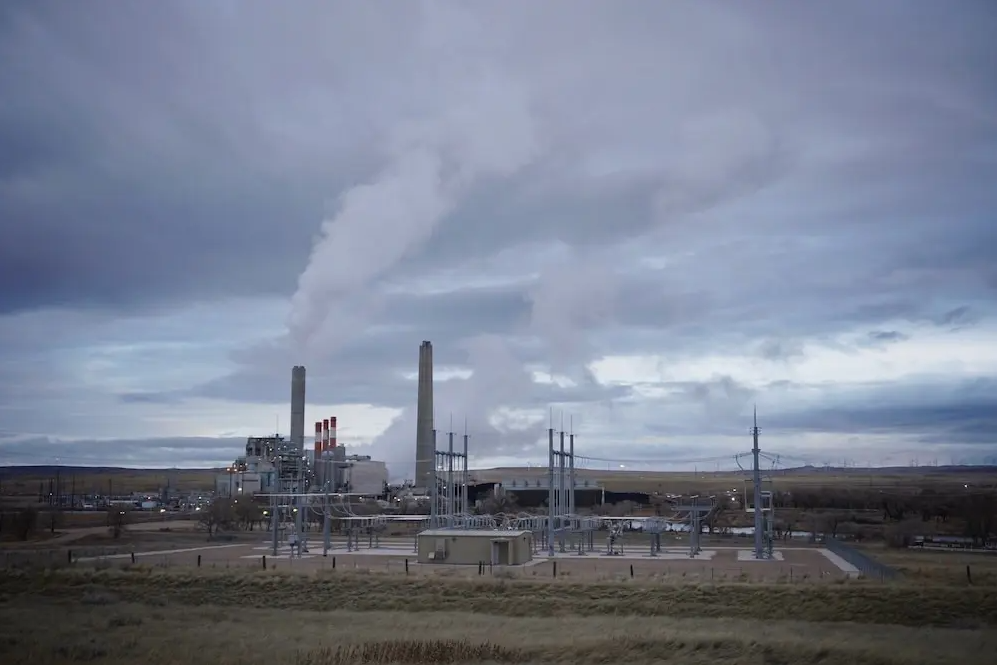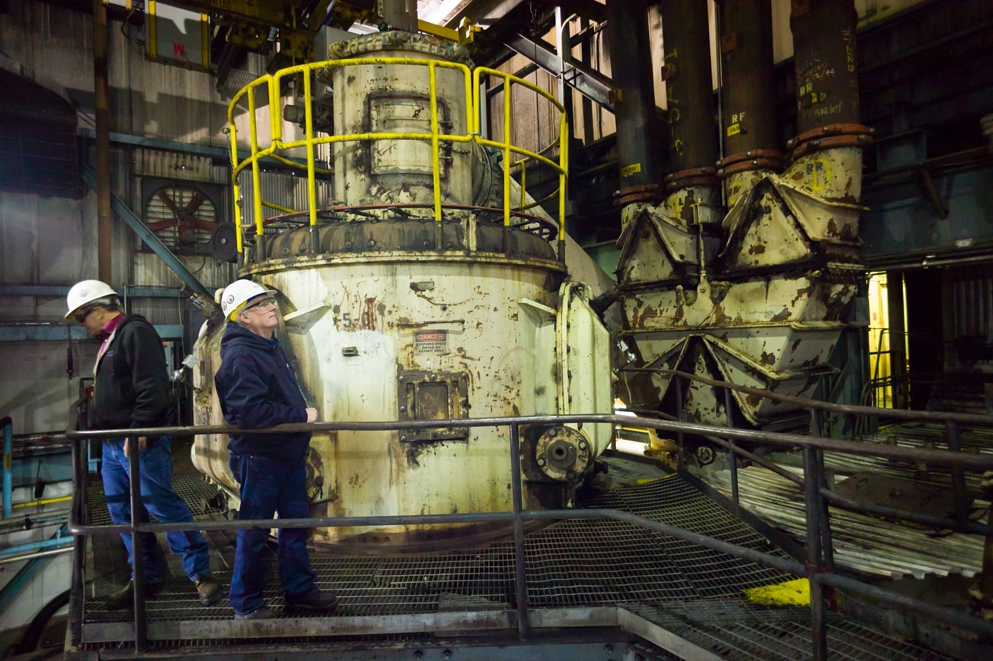Wyoming will become “ground zero” as home to the first of a new generation of nuclear power plants to be developed via a diverse public-private partnership that includes Bill Gates, officials announced Wednesday.

The advanced nuclear energy demonstration plant will replace one of four coal-fired plants in PacifiCorp’s Wyoming power system: either Jim Bridger near Rock Springs, Naughton in Kemmerer, Dave Johnston near Glenrock or WyoDak in Campbell County. The Natrium Reactor Project is expected to produce an operating nuclear power plant in Wyoming within seven years, the first of its kind in the U.S., generating jobs in construction and operations.
Other details have yet to be made public, including an exact timeline for construction and funding specifics, and some have concerns about issues like waste and water use. But state and federal officials gathered to announce the news Wednesday morning from the Capitol Building shared rosy projections about the project’s implications for Wyoming’s economy and the state’s role on the cutting edge of energy technologies.
“Today’s announcement really, truly is game-changing and monumental for Wyoming,” Gov. Mark Gordon said during the Wednesday press event.
The multi-billion dollar project is a joint effort of PacifiCorp, TerraPower and the U.S. Department of Energy that is expected to produce a 345-megawatt power plant in Wyoming.
Gates, co-founder of Microsoft and co-chair of the Bill and Melinda Gates Foundation, is also founder and chairman of TerraPower. In a recorded video statement, Gates said the Natrium project is designed to represent a dramatic change in performance, safety and cost of nuclear energy. It is his hope, he said, that the project will be successful by building “off the foundation laid by Wyoming’s energy workforce.

“Wyoming has been a leader in energy for over a century, and we hope that our investment in Natrium will allow Wyoming to stay in the lead for many decades to come,” Gates said.
The advanced nuclear plant would employ a 345-megawatt sodium-cooled fast reactor combined with a molten salt energy storage system. Its thermal storage has the potential to boost the system’s output to 500-megawatts of power for more than five-and-a-half hours when needed. The system slated to come to Wyoming is a demonstration project, with developers hoping to see the Natrium system in use nationwide.
U.S. Department of Energy Secretary Jennifer Granholm said the Biden administration sees the Natrium project as a starting point for replacing fossil-fuel-generated power in the U.S. in a way that doesn’t leave mining communities in the cold.
“I think that’s how we can leave fossil energy communities who have literally powered our country and our economy for decades,” Granholm said in a live video stream. “We can lead them into the clean energy future. They empowered our past — we want them to power our future. As with the president’s proposal, the American Jobs Plan, this administration will see to it that we launched more nuclear energy demonstration projects across the country.”
Earlier in the year, Gordon set a goal for Wyoming to capture more carbon than it emits, underscoring what he has long touted as the state’s potential for developing carbon capture technology. Gordon was adamant Wednesday that he still sees fossil fuels as part of the state’s energy portfolio going forward.
“I am not going to abandon any of our fossil fuel industries,” he said. “It is absolutely essential to our state.”
Utility shift
PacifiCorp unveiled plans in late 2019 to retire multiple coal-fired electrical generating units in the region ahead of schedule, including at the state’s Jim Bridger and Naughton plants. It was one of many recent blows to the ailing coal industry, which state lawmakers have been working to prop up even as market forces create a decline.
Gary Hoogeveen, president and CEO of Rocky Mountain Power, the Wyoming, Idaho and Utah business unit of PacifiCorp, said coal plants will need to be retired and replaced with something that adds reliable power to the grid, though he noted that the Natrium news won’t trigger an accelerated effort to close coal plants in Wyoming.

“The economics will stand on their own as to whether coal plants will continue operating or not,” Hoogeveen said.
But with a goal of decarbonization while supplying constant power to customers, Hoogeveen said nuclear power will be critical to add to the mix.
“We know as a utility in the utility industry, like everyone else does in the utility industry, that you can’t do 100% renewable and battery power and serve 24/7 — not with the current technology that we have,” he said. “That’s what’s so exciting about today, because this technology can allow us to provide carbon-free electricity 24/7, 365. And that is amazing. There’s no other word for it.”
U.S. Sen. John Barrasso (R-Wyo.), who also attended the Wednesday announcement, emphasized the bipartisan nature of policy from Washington, D.C., that has pushed the issue to the forefront. He specifically cited the Nuclear Energy Innovation and Modernization Act, which he helped introduce and usher through Congress.
Even with a united front of diverse public and private interests backing the project, Barrasso said “there are a lot of hoops to jump through,” noting that the multi-agency regulatory process will be extensive. Chris Levesque, TerraPower CEO and president, said there’s a Congressional mandate, however, to move it forward expeditiously. Earlier this year, the Biden administration announced its goal to achieve net zero emissions economy-wide by 2050 and a carbon-free electricity grid by 2035.
“The motivator is that we need this clean energy on the grid by the 2030s,” Levesque said. “Congress created a real sense of urgency with that.”
It was less clear, however, how much the project would ultimately cost. It will be a 50-50 cost share between the private sector, TerraPower in this case, and the public, Levesque said. The U.S. Department of Energy awarded TerraPower $80 million in 2020 to demonstrate its Natrium technology.
“It’s a public-private partnership, really, and risk-sharing between companies like TerraPower, and the government, frankly,” Levesque said.
Several of the project’s proponents noted Wednesday that Natrium reactors would produce two-thirds less waste than the 95 water-cooled plants currently operating in the U.S. The Department of Energy has committed to managing nuclear waste from plants around the country, Levesque said.
Wyoming lawmakers have long flirted with establishing a temporary storage facility for the nation’s spent nuclear fuel in the state, and in 2019 briefly showed interest in legislation that would authorize the governor’s office to study whether storing nuclear waste in Wyoming communities would be viable. The subject was dropped after it was made clear the governor didn’t need legislative authorization to work with the Department of Energy on the matter.
Gordon said Wednesday that Wyoming “did not want to be a waste repository for the rest of the nation.”
“Just to stress, this is not a way of solving the nation’s waste problems on Wyoming’s back,” Gordon said.

There would also be opportunities, Barrasso said, to boost Wyoming’s uranium mining, which could supply the reactors. As the No. 1 uranium producer in the nation, he said it’s a great opportunity to provide energy security.
“We’ve had Russia flooding the market with uranium, and we want to make sure we have a stable source from a standpoint of national security, and Wyoming is the best place to do it,” he said.
While applauding the effort to reduce carbon emissions, Marcia Westkott, chair of the landowner advocacy group Powder River Basin Resource Council, said there are questions about employing an “experimental and unproven” technology. She called the announcement premature as the Nuclear Regulatory Commission has yet to license a design.
Levesque noted during the press conference that there hadn’t been a “great track record” of licensing in the U.S. for about 20 years, but that Barrasso’s nuclear bill would empower the Nuclear Regulatory Commission to streamline the process.
The PRBRC also has questions about the cost to build the facility, how much water would be used and how waste would be stored, Westkott said. Uranium mining would not replace lost revenue from coal, she said, as there are no royalties and a significantly smaller amount of severance tax generated.
Ultimately, Westkott said Wednesday’s announcement was a diversion from answering Wyoming’s most pressing questions about its economy.
“Perhaps the most dangerous aspect of this latest claim of a ‘silver bullet’ to save Wyoming’s economy is that it once again diverts attention away from our very real crisis in revenue, jobs and community survival,” Westkott said. “Wyoming’s elected leaders have still not come forward with a real plan to address lost jobs, declining revenues and the dissolution of coal communities. This speculative feasibility study will not do that.”